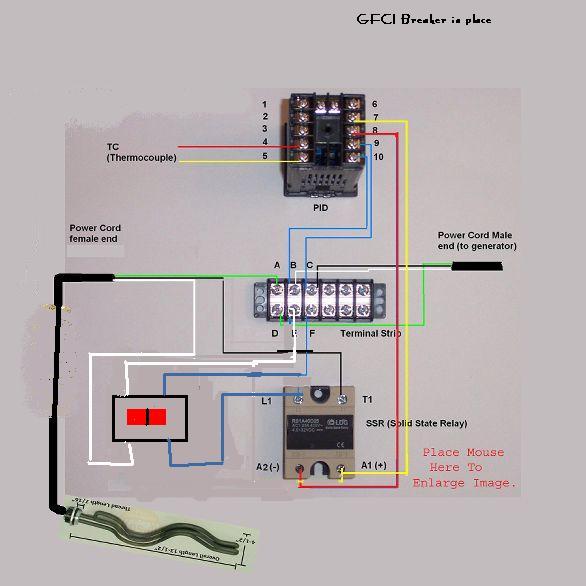Can someone tell me if this would work for wiring my 4500 watt 240 volt water tank heater to my PID controller with SSR.
I kind of stole the idea from someone else but tweaked it abit.
My SSR is 40 amps. My PID works at 240v.
I put a switch in there so I wouldn't have to use 2 relays.
The black and white wires are the 2 hots.
i'm using a auber instruments PID

I kind of stole the idea from someone else but tweaked it abit.
My SSR is 40 amps. My PID works at 240v.
I put a switch in there so I wouldn't have to use 2 relays.
The black and white wires are the 2 hots.
i'm using a auber instruments PID




